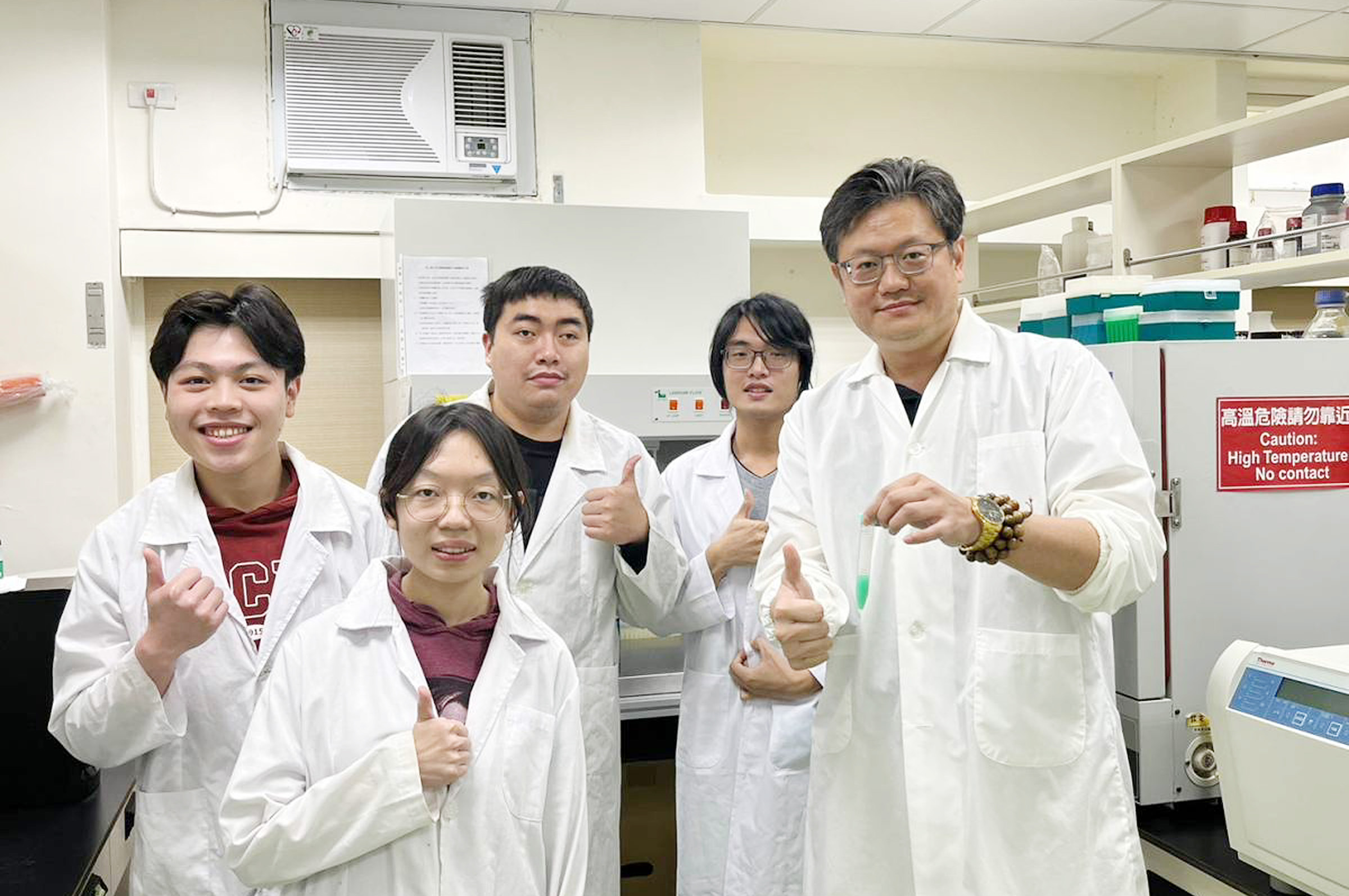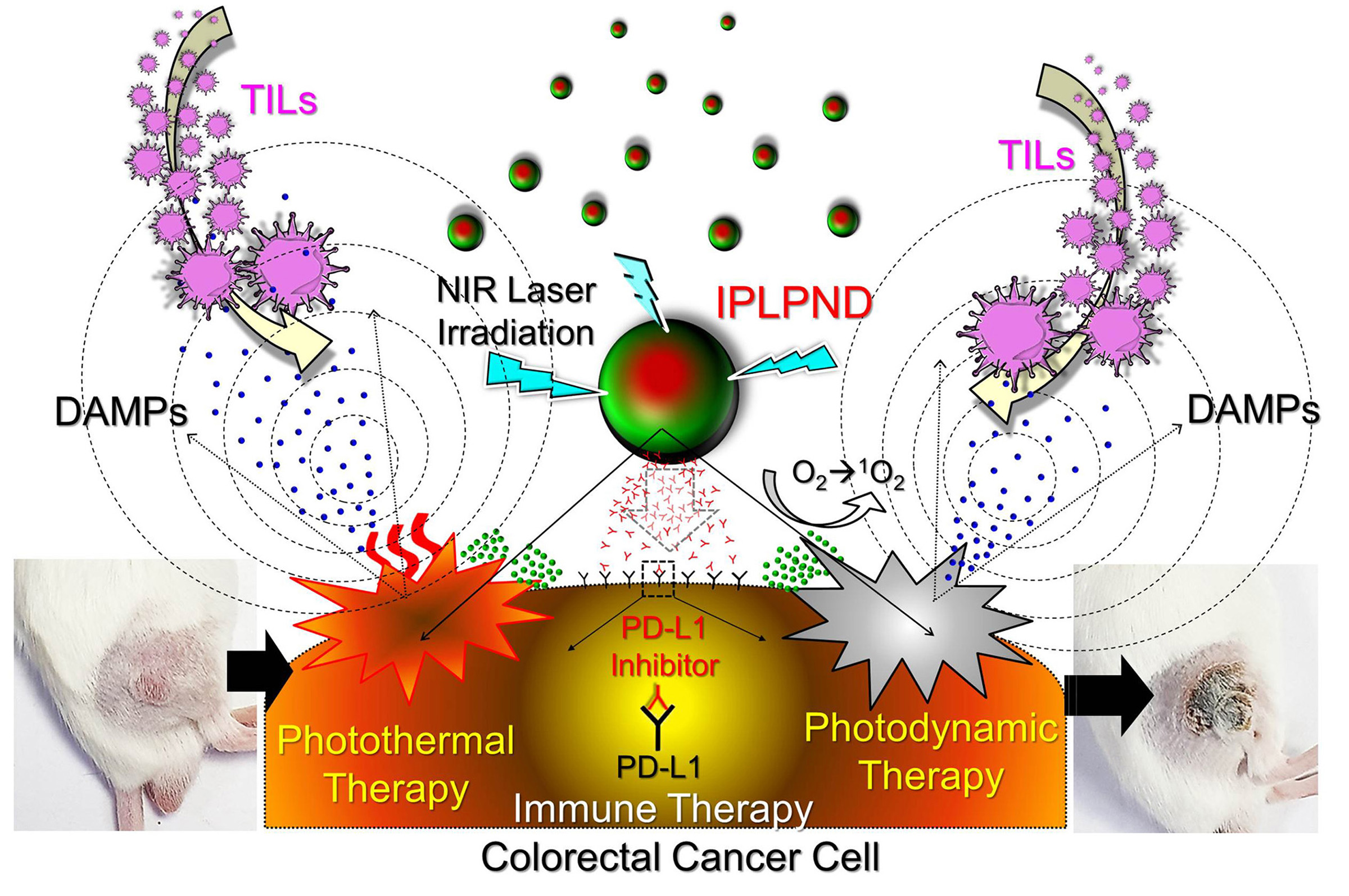The Dawn of Colorectal Cancer Therapy: The Emerging Drug Nanocomposites developed by Professor Yu-Hsiang Lee Offer Novel Treatment Strategy
Posted on: 2023-02-24

Photo courtesy of Department of Biomedical Sciences and Engineering
The research team led by Professor Yu-Hsiang Lee in the Department of Biomedical Sciences and Engineering at NCU has dedicated on cancer-related drug delivery research for years. Recently, Lee and his team successfully developed a new drug nanocarrier, which is composed of photosensitizers (Indocyanine green; ICG), immune checkpoint inhibitors (aPD-L1), and perfluorocarbons (PFC) and is constructed by double layers structure; named ICG-aPD-L1-coloaded PFC double-layer nanodroplets IPLPNDs, for photoimmunotherapy of colorectal cancer (CRC), and the research efforts have been published on Chemical Engineering Journal in Feb 2023.
CRC ranks the third most common cancer and is the second leading cause of cancer death in the world. In particular, Taiwan ranks the top one in CRC occurrence among all other countries. “These circumstances indicate that an effective therapeutic strategy for CRC treatment is urgently needed nowadays,” said Professor Lee. “As a biomaterial scientist, I am always thinking about trying to create a solution to efficiently solve clinical issues, and hence I believe that the nanomedicine/drug nanocarrier may be a feasible strategy because it can be freely assembled with different agents, promote drug delivery efficiency, enhance cellular absorptivity, and reduce toxicity to surrounding tissues/organs, and thereby achieve precision medicine,” outlined Professor Lee.
PFC is one of the components of the IPLPND, while perfluorooctyl bromide (PFOB), an USFDA-approved material for artificial blood, is selected as the PFC material in this study. “The element of PFC is one of the uniqueness of the IPLPND” said Professor Lee. “Because of PFC, the IPLPNDs can actively bring huge amounts of oxygen into tumors and therefore the effectiveness of photodynamic therapy can be dramatically enhanced,” explained Professor Lee. In addition, an effective phototherapy may further promote the effectiveness of subsequent immunotherapy, resulting in an efficacious CRC treatment consequently.

The IPLPNDs can provide a three-stage anticancer mechanism including phototherapy, elevated immunogenicity of tumor microenvironment, and immunogenic cell death-enhanced immunotherapy for CRC treatment. Photo is retrieved from the Chemical Engineering Journal
Related links
Last updated: 2023-07-13
Posted by: Academic News
Visit counts: 714



